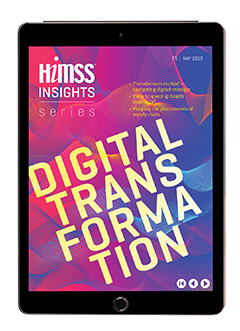
The digital transformation of healthcare can be extremely demanding. Communication infrastructures that involve patients are patchy. And the results that you get when individual healthcare providers try to digitize on their own can be, well, interesting.
We share a story of a parent receiving an unencrypted email the day after their child’s healthcare appointment which included three PDF documents about the results of various tests. The documents were password-protected, and the password was sent by SMS messaging to my mobile simultaneously with the email. The email explained to me that I had to keep the password, supposedly forever, because the PDFs would continue to be protected even after I saved them under a different file name. There is a way out, though, and I am still quoting: “On a secure device, you can include the password into the file name.” This is what the digitization of healthcare looks like in Germany and likely around the world.
In this issue of HIMSS Insights you will read about the digital transformation of healthcare in various sectors of the healthcare system. Some of the examples are pretty advanced, like using blockchain for medication tracking in order to fight pharmaceutical counterfeiting. Others, like drone delivery of pills to private households, are experimental. What all activities have in common is that someone identified a problem and thought about how digital technologies might help to solve it. But an individual is not enough.
Successful change needs transformers on all levels, from the dedicated individual on the ground to the clear-sighted regulator further up. We are getting there. One day, messages from doctors about using passwords to rename protected PDF files will be a thing of the past.
